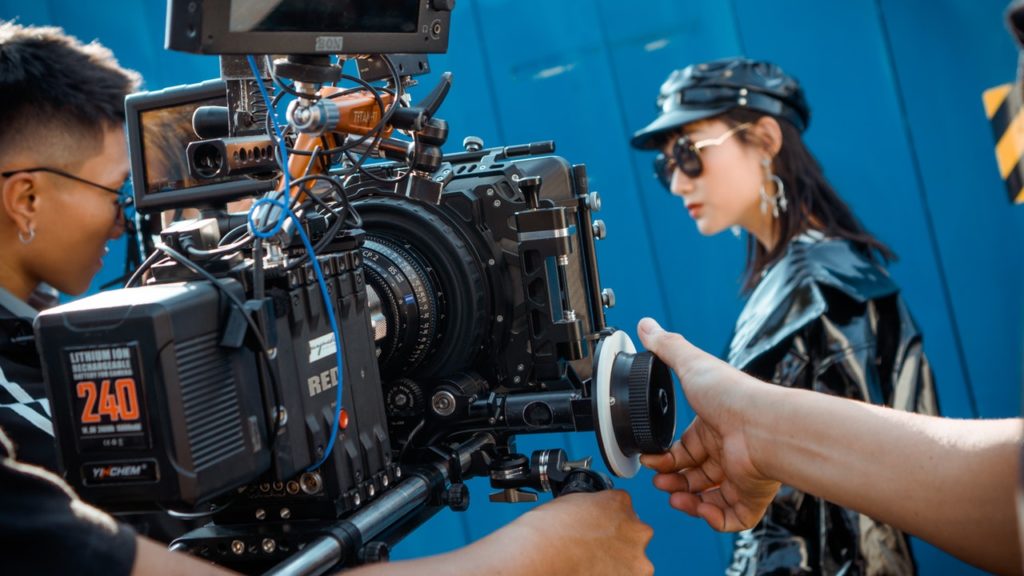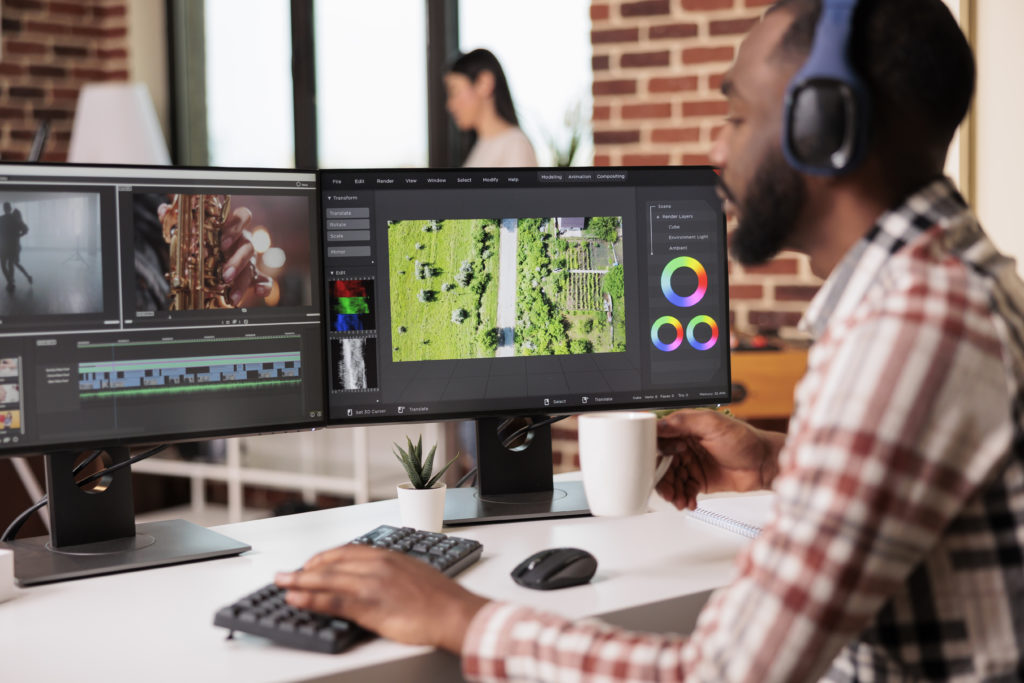
Video Marketing with Purpose: Creating Unique and Fun Videos for Your Venue or Show’s Social Pages
One of the most critical components of marketing today is video. Video has become the most dominating aspect of social media and digital platforms. And it is one of the most powerful marketing tools for venues, bands, musicians and performers. Whether you’re promoting upcoming concerts or your venue, you’re most likely turning to digital platforms such as Instagram, Twitter, and Facebook. Incorporating video into your online content can make a difference for your marketing efforts. In this guide, digital media expert Zena Hanna, who is the founder and CEO of Zena Digital Group, shares her expertise on how to effectively leverage video marketing for your concert or venue.
Effectiveness of Video Marketing
As videos are a huge investment both in time and money, Hanna advises concert promoters and music venues to start by identifying their goals and determining how they want their viewers to benefit from the content. She notes that it’s important to have the entire content team understand the objectives and be on the same page. Without a consensus, you risk putting out irrelevant and low quality videos online which will not engage with your followers.
If you’re trying to drive people to your website or a ticket link, or spread awareness for an upcoming concert, using video marketing can help you meet these goals. Hanna says that YouTube is a great search platform to utilize when trying to increase your search ranking in Google. But to succeed, you need to do more than just upload a video. The keywords you choose for the description and the title of your video will make a difference in your video showing up in search results and attracting clicks. One tool Hanna mentions that can be useful is SEMrush, which analyzes search words in Google so that you’ll know which keywords are relevant to add to your descriptions and tags.
Furthermore, it’s also important that the title of your video matches the content as you don’t want to mislead your audience. Dishonesty can hurt your reputation with your followers and lower your audience engagement in the future. Another aspect to keep in mind is the image you choose as the thumbnail for your video when uploading it to YouTube. A captivating photo will improve your search ranking both on the platform and in Google. Other ways to increase your displays in search are creating playlists and adding links in the video description.
Types of Videos
There are many types of videos worth creating and sharing. When you’re choosing which ones, you’ll want to think about your goals. Some videos require investing in hiring a production team as well as a lot of time, while others can be done quickly and easily via a smartphone. As videos grab attention more than other media assets, pushing out regular videos on your social pages is a good marketing strategy.
Hanna mentions that frequency of simple and quick videos created with a phone can be more beneficial than investing in one video that requires a bigger production. Some ideas for short and easy to make videos include Instagram stories that promote artists and their shows, and Boomerang or Hyperlapse videos of artists walking on stage for something more fun and unique. Hanna suggests that as these videos should be posted frequently, it’s best to make them not self-serving but entertaining instead. Creating videos via a smartphone also gives them a personal touch. Here’s an example of a creative video that Brooklyn Mirage shared on their Instagram account.
For venue owners, showing a 360-degree tour of the venue can be a great way to show bookers and artists the space, audience capacity, and atmosphere to help them envision what their event or concert can look like at your venue. You may also want to create a video tour of your space to add to your website and YouTube. Hanna recommends finding a unique and artistic way to approach this by “adding personality and thinking outside of yourself.” For an example, you may want to “ask your five-year old nephew” to be the tour guide. Try thinking of the video from “a different angle.” Here’s an example of a good and artistic video from Cityfox that shows a space very well.
Videos that require a higher production value include episodic series such as interviews with music artists and performers. Artists can talk about their music, reveal a little bit about themselves, offer tips for other musicians, and personally invite fans to come to their shows. You can watch an example of a successful promotion of an artist from Gramercy Theatre here and a video interview with an artist from Webster Hall as well. To get the most out of the production and time involved, make sure to “prepare questions in advance,” Hanna suggests. She also recommends using these videos to establish yourself as a knowledgeable thought leader and change maker in the industry. It’s best to “find a niche.”
Live videos can also be effective in growing your online presence – if done well. Hanna notes that an important thing to keep in mind with live videos is that they send notifications to followers. Therefore, it’s essential that you are “selective and intentional with the content” as audiences don’t want to be bothered with notifications for updates that are not important to them. Choose your live videos wisely. Examples of what could make a good live video include a “behind-the-scenes look of an artist’s ritual before a show” or backstage with a bartender showing how to mix a cocktail. It’s also best to keep the live videos short and it can be helpful to hire professional experts to assist with creating these videos as they should be of high-quality.
Creating High-Quality and Engaging Videos
Understanding why video marketing is effective and crucial is one thing, but to do it well is another matter. Putting out videos that are not of good quality or engaging enough can do more harm than good. Two important production aspects to pay attention to are lighting and sound. You want the images in the video and the audio to be clear. If they’re not, viewers will be distracted by the poor quality to get any value from the video. Thus, it is sometimes best to hire a production crew with a lighting and sound expert.
Uploading Videos on Digital Platforms
When recording videos, think about the platforms you’re planning to distribute the videos to and make sure they meet the platform’s requirements for length. For an example, Instagram has a 1-minute limit for a video post and Twitter has a limit of 140 seconds. Instagram does have IGTV where you can share longer form videos and IGTV is a great tool to take advantage of for showing a tour of a music venue or interviews with artists. If you have multiple things to cover in a video or several interviews, consider creating a series instead and utilize Facebook Watch and YouTube playlists. To see an example of a successful Facebook Watch series, click here. Boosting videos on Facebook can be worthwhile as that not only increases your views, but it will show a large number of views to more fans so that they will feel compelled to watch the videos.
With 2020 being an election year, more and more people are flocking to Twitter. This makes it a great tool to take advantage of for reaching a wider audience. Twitter’s algorithm is also set up to allow tweets to go viral easily, if the content is witty or groundbreaking. Thus, feel free to get fun and even silly so that your tweets get shared and spreads across the network and make sure to tag artists and record labels to help extend your reach. GIF’s and animations are especially great for Twitter. Here’s an example to check out from Music Hall of Williamsburg. Also, make sure to tag artists and record labels to help extend your reach.
Regardless of the platforms you choose to upload your videos and links, Hanna advises to always track views and clicks to see how your content is performing. It can be helpful to use a tool such as Google Analytics for this. Tracking the performance of your content will let you know what’s working and what’s not so that you have a better idea of what to keep or avoid when it comes to future content.

Matt Ford is the founder and CEO of Prism.fm, an Austin-based software company revolutionizing live music event management. With a background in entrepreneurship and a degree from the University of Wisconsin-Madison School of Business, Ford combined his self-taught coding skills with firsthand experience as a concert promoter to address the inefficiencies he observed in the industry. In 2018, he launched Prism.fm, an all-in-one platform designed to streamline operations for venues, promoters, and agencies by replacing cumbersome spreadsheets with integrated tools for booking, financial tracking, and contract management. Under his leadership, Prism.fm has grown significantly, achieving $3 million in annual recurring revenue post-COVID and securing over $15 million in funding . Ford’s commitment to building user-centric solutions has positioned Prism.fm as a trusted partner for over 1,500 venues and promoters worldwide.



